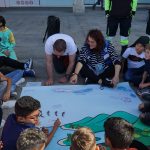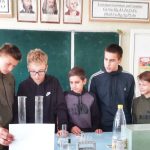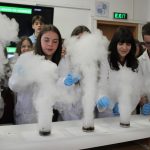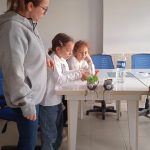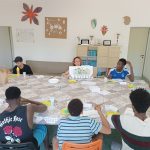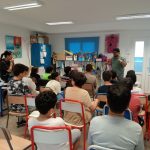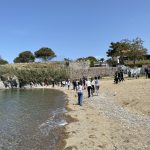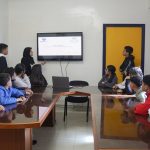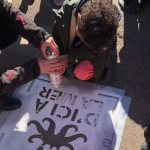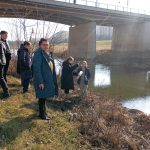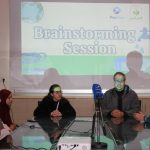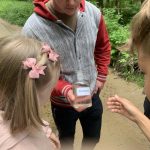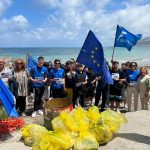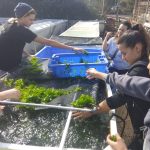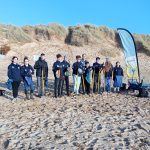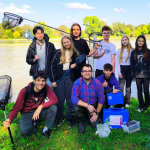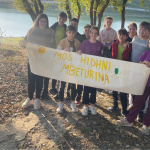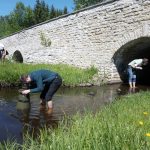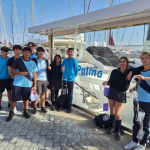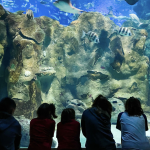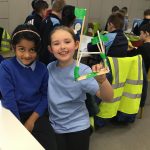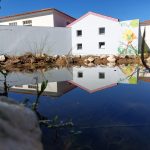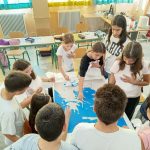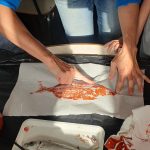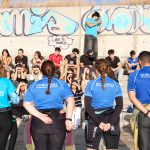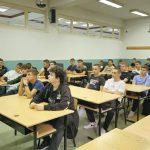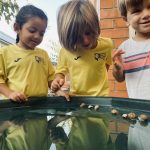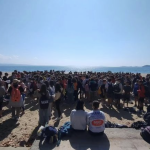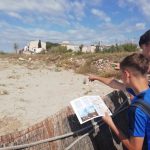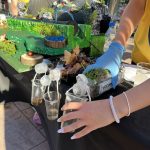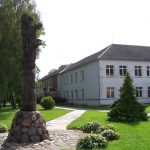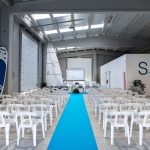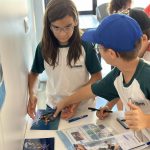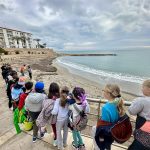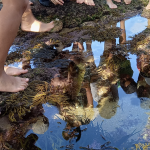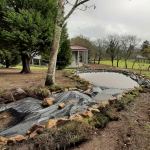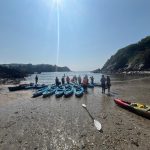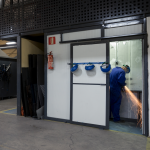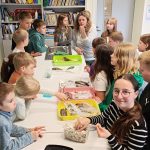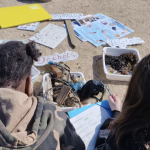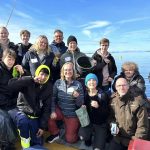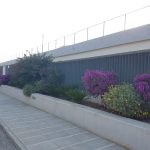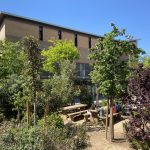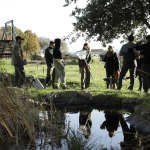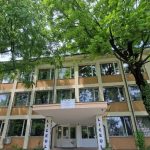
CJD_BLUE – Empowering the Next Generation of Marine Ambassadors
Porto, Portugal
3rd FUNDING CALL
By engaging students of all ages in beach cleaning, marine research, and creative installations, CJD_BLUE fosters deep connections between Porto’s young citizens and their coastal environment. The project aims to make ocean literacy an integral part of education while inspiring public engagement with marine conservation in everyday city life.
Objectives
The CJD_BLUE project is structured around five key objectives:
- Engage students in hands-on conservation: At least 850 students (50% of the school population) will participate in a scientifically guided beach cleaning initiative in the Porto/Matosinhos coastal area. With the support of CIIMAR marine researchers and municipal authorities, students will collect, classify, and document marine waste.
- Integrate marine literacy into education: By May 2025, all participating classes (pre-school to secondary) will take part in four structured educational sessions with CIIMAR researchers. These will incorporate marine science into the curriculum, with learning progress tracked through pre- and post-activity assessments.
- Create scientific marine art installations: Students will transform collected waste into at least 10 scientifically accurate art pieces depicting local marine ecosystems. Each piece will be validated by CIIMAR researchers to ensure it effectively communicates marine conservation themes.
- Bring marine awareness to the city: Five major metro stations will host student-created marine waste art installations, reaching 10,000 daily commuters and connecting urban residents with ocean conservation.
- Achieve European Blue School certification: By documenting all activities, integrating marine literacy into the curriculum, and measuring community impact, the project aims to meet the requirements for Blue School certification by January 2026.
Activities and Collaborations
CJD_BLUE follows a carefully structured sequence of activities, ensuring student engagement at every level.
Phase 1: Preparation and Planning (Feb–Mar 2025)
The project starts with securing partnerships and planning logistics. Meetings with CIIMAR researchers, municipal waste management, metro authorities, and local government will establish the framework for the beach cleanup and public exhibition. Pre-cleaning awareness campaigns will be launched in schools.
Phase 2: Beach Cleaning (Apr 2025)
April marks the first major milestone: a large-scale beach cleaning event at Porto/Matosinhos. CIIMAR researchers will guide students in understanding marine pollution and proper waste collection. Younger students will work in safer, controlled areas, while older students handle more complex zones.
Phase 3: Scientific and Artistic Development (May–Dec 2025)
Students will work with CIIMAR researchers, art teachers, and biology teachers to create cycle-specific marine ecosystem themes. Each age group will focus on different aspects of marine life, from basic habitats (pre-school) to advanced conservation concepts (secondary school). Scientific accuracy will be ensured through three CIIMAR-led sessions throughout the year.
Phase 4: Exhibition Installation and Public Engagement (Jan 2026)
The final phase will bring the students’ work to the public. Art installations will be placed in metro stations connecting Porto’s center to the coast, reinforcing the link between urban life and ocean conservation. Each piece will include a QR code linking to project information, scientific explanations, and calls to action.
Outputs
CJD_BLUE will produce a range of educational and awareness resources designed for accessibility and reuse by other schools and institutions:
Educational Materials:
- Age-specific beach cleaning protocols and safety guides
- A marine waste classification toolkit for school and community use
- Marine ecosystem fact sheets tailored to different educational levels
- A best practices guide for organizing school-wide beach cleanups
Digital Resources:
- Photo and video documentation of the entire project, from beach cleanup to artwork creation
- Interactive QR codes linking metro installations to educational content
- An online portfolio showcasing the art pieces with scientific explanations
- Social media campaign templates for continued awareness efforts
Physical Outputs:
- 10+ art installations created from marine waste, displayed in metro stations
- Open-access, editable educational materials available in Portuguese and English
Impact
The project’s impact extends far beyond the participating students. 10,000 daily metro commuters will engage with the marine-themed artworks, fostering greater public awareness of ocean conservation.
Students will develop scientific research skills, environmental responsibility, and creative problem-solving abilities. Pre- and post-activity assessments will measure the growth of their marine literacy.
By earning European Blue School certification, CJD_BLUE will serve as a model for other schools, demonstrating how education, science, and art can combine to create real environmental change.



